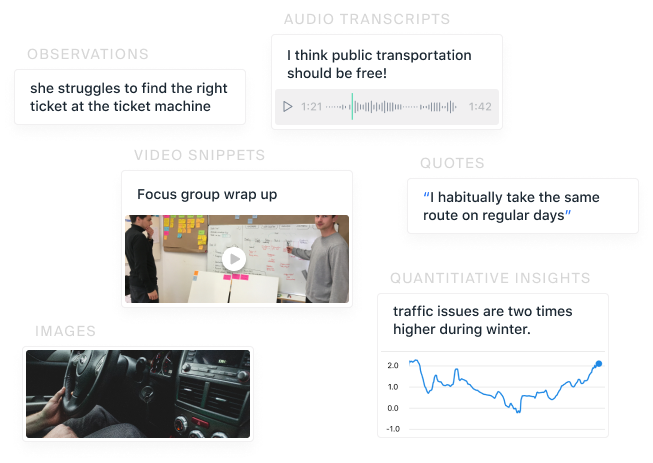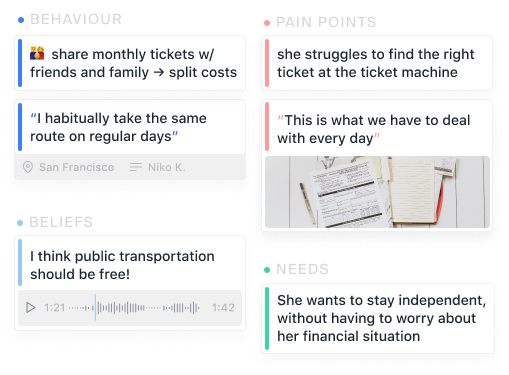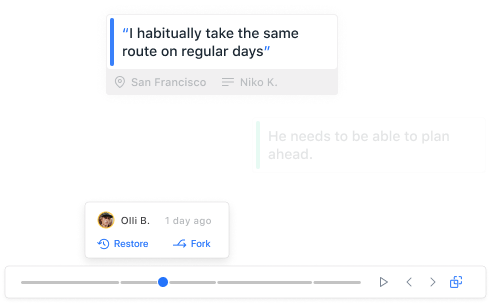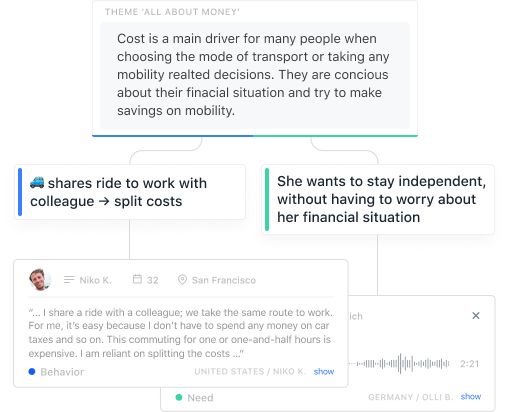
Bachelor Thesis July 2018, 16 Weeks HfG Schwäbisch Gmünd Download the full Thesis ↓
Design at its core is about organizing complexity and finding clarity in chaos. Finding this clarity, meaning making sense out of data, is a crucial aspect for the process of innovation. In our Thesis, we investigated the process of sensemaking in the context of design research in order to find out how this process can be altered.
Grounded in the findings from our research, we developed principles that illustrate important mechanics for the process of sensemaking. Further, we developed a tool, that we call Link — a digital platform for managing, structuring and analyzing large sets of research data, to ultimately develop insights and draw novel meaning from it.

The concept is based on the idea of unifying research artifacts, be it observations, quotes, images, audio and video files, into a coherent digital format. This format is what we call data assets. An asset can contain any type of information representing a unit of meaning which the researcher considers valuable to the process of sensemaking.




In Link, teams can gather, organize and manage all kinds of data, be it qualitative, quantitative or data from secondary research.


In Link, teams can gather, organize and manage all kinds of data, be it qualitative, quantitative or data from secondary research.
Starting to make sense out of all constituents, the team can use the Canvas to start building a spatial representation of their mental model.
